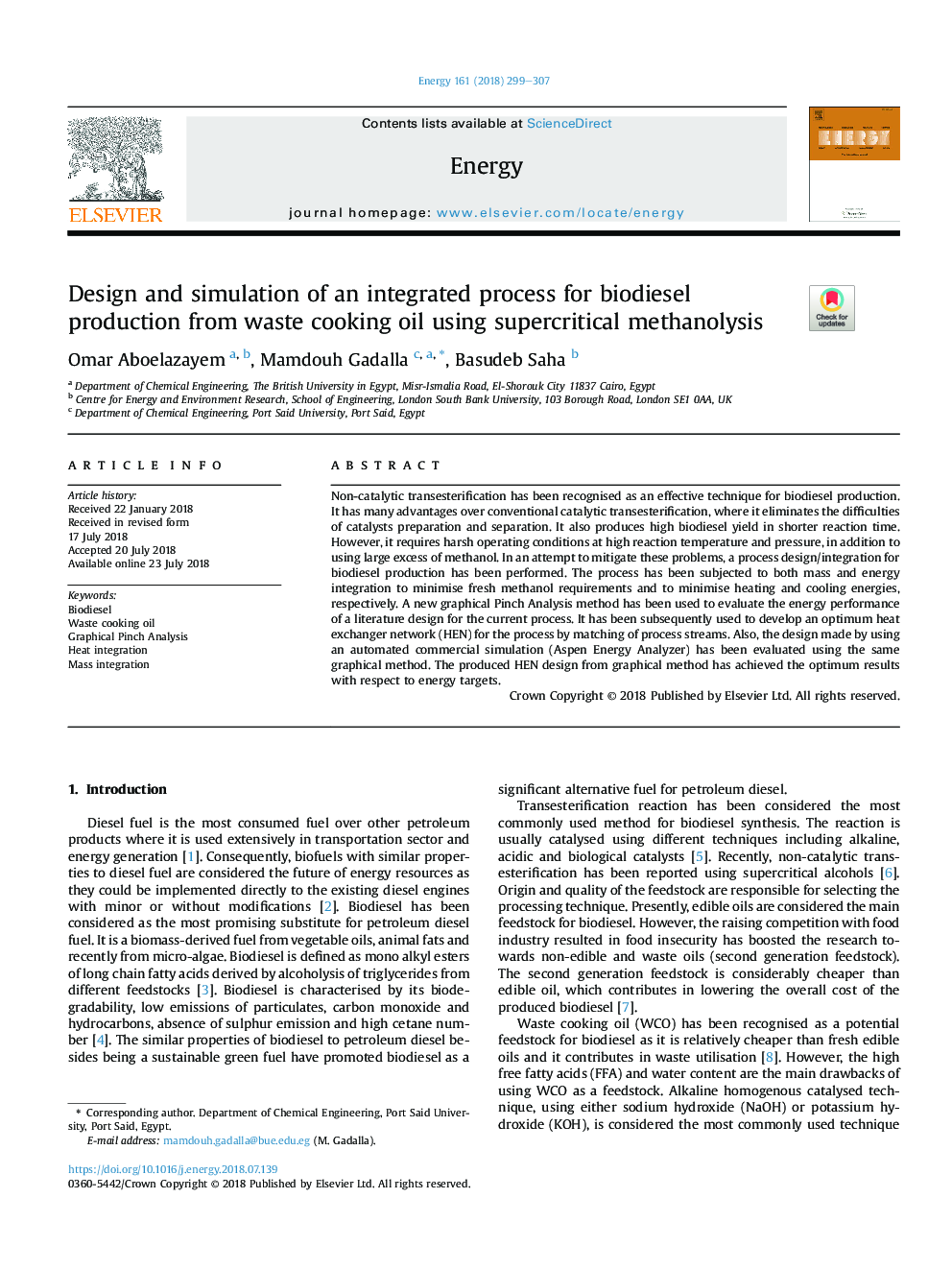| Article ID | Journal | Published Year | Pages | File Type |
|---|---|---|---|---|
| 8070921 | Energy | 2018 | 9 Pages |
Abstract
Non-catalytic transesterification has been recognised as an effective technique for biodiesel production. It has many advantages over conventional catalytic transesterification, where it eliminates the difficulties of catalysts preparation and separation. It also produces high biodiesel yield in shorter reaction time. However, it requires harsh operating conditions at high reaction temperature and pressure, in addition to using large excess of methanol. In an attempt to mitigate these problems, a process design/integration for biodiesel production has been performed. The process has been subjected to both mass and energy integration to minimise fresh methanol requirements and to minimise heating and cooling energies, respectively. A new graphical Pinch Analysis method has been used to evaluate the energy performance of a literature design for the current process. It has been subsequently used to develop an optimum heat exchanger network (HEN) for the process by matching of process streams. Also, the design made by using an automated commercial simulation (Aspen Energy Analyzer) has been evaluated using the same graphical method. The produced HEN design from graphical method has achieved the optimum results with respect to energy targets.
Related Topics
Physical Sciences and Engineering
Energy
Energy (General)
Authors
Omar Aboelazayem, Mamdouh Gadalla, Basudeb Saha,
